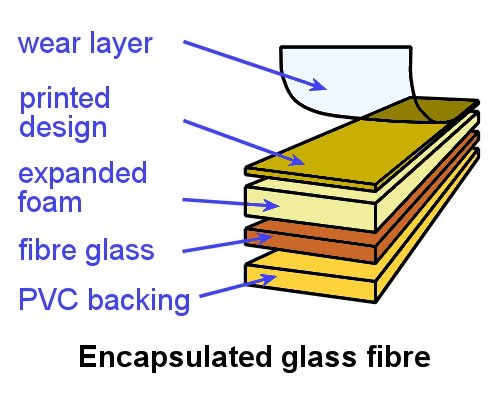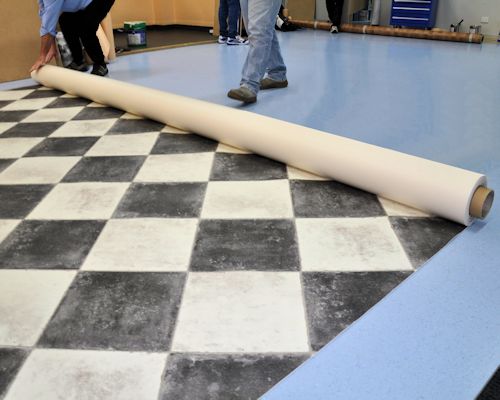Lay flat vinyl
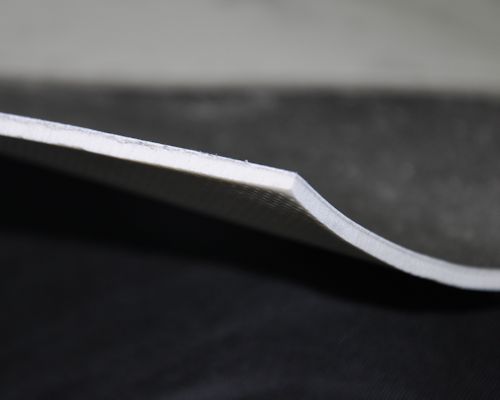 Audio for slide 1 (mp3 |6|KB)
Audio for slide 1 (mp3 |6|KB)
Lay flat vinyl is a form of heterogeneous vinyl.
This means it is made up of several layers.
The term 'heterogeneous' is used to distinguish multi-layered products from 'homogeneous' vinyl, which is uniform throughout.
We deal with homogeneous products in the unit: Commercial vinyl.

This means it is made up of several layers.
The term 'heterogeneous' is used to distinguish multi-layered products from 'homogeneous' vinyl, which is uniform throughout.
We deal with homogeneous products in the unit: Commercial vinyl.

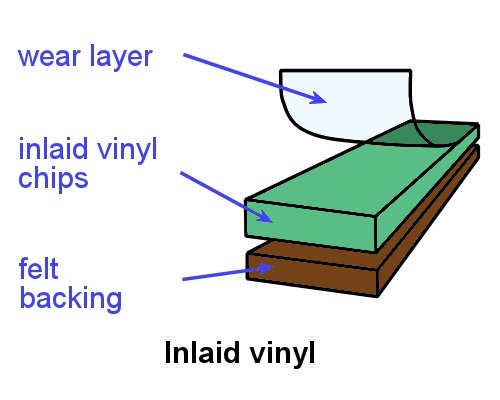 Audio for slide 4 (mp3 |6|KB)
Audio for slide 4 (mp3 |6|KB)
Less common is inlaid vinyl, although it is still a popular structure for certain lines of resilient tiles.
Inlaid vinyl is made from solid vinyl particles fused to a backing material and covered with a translucent vinyl mortar.
This allows the colours to extend right through to the backing, providing a longer wear life.

Inlaid vinyl is made from solid vinyl particles fused to a backing material and covered with a translucent vinyl mortar.
This allows the colours to extend right through to the backing, providing a longer wear life.

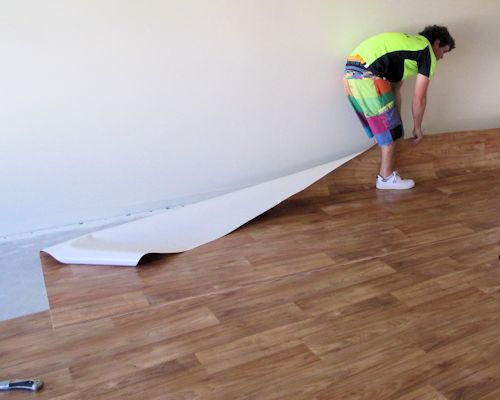 Audio for slide 5 (mp3 |6|KB)
Audio for slide 5 (mp3 |6|KB)
Roll widths
Lay flat vinyl is designed to be laid with the minimum number of seams, so the choice of width is determined by the floor dimensions.
Products imported from America are supplied in imperial widths - typically 6 feet (1.83 m) and 12 feet (3.66 m).
If the products are made in Australia or Europe, they're supplied in metric sizes - generally 2 m, 3 m and 4 m.

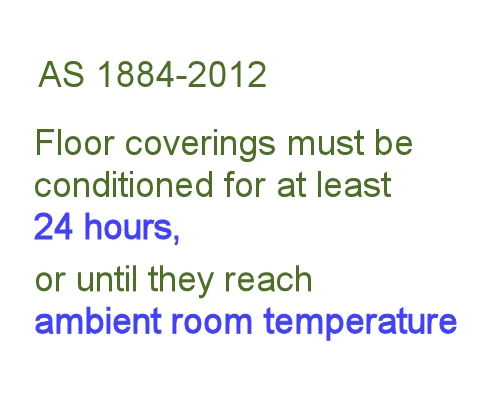 Audio for slide 7 (mp3 |6|KB)
Audio for slide 7 (mp3 |6|KB)
AS 1884-2012 says that floor coverings should be conditioned for at least 24 hours, or until the product has achieved an 'ambient room temperature' range of between 15° and 28° C.
For more information on the conditioning process, including the procedures you should follow in buildings with air conditioners or heated floors, go to the lesson 'Conditioning' in the unit: Preparing floor coverings.

For more information on the conditioning process, including the procedures you should follow in buildings with air conditioners or heated floors, go to the lesson 'Conditioning' in the unit: Preparing floor coverings.

Go to Adhesives

Industry Network Training and Assessment Resourses
© 2023 Workspace Training




